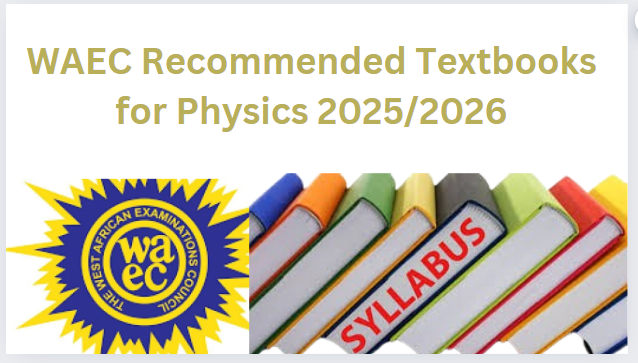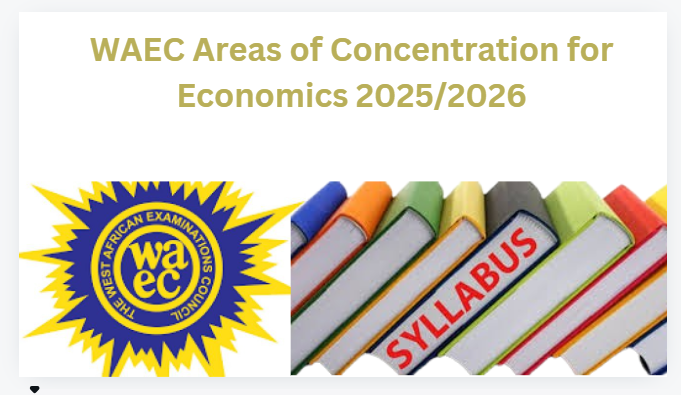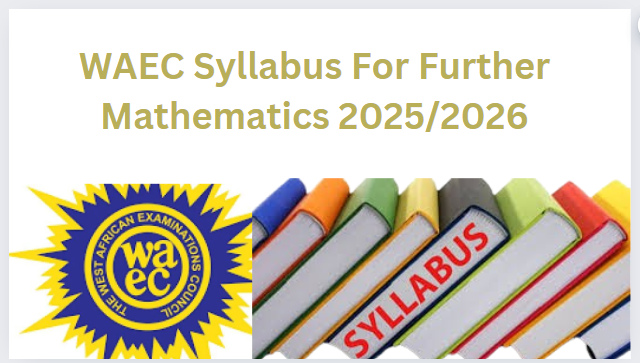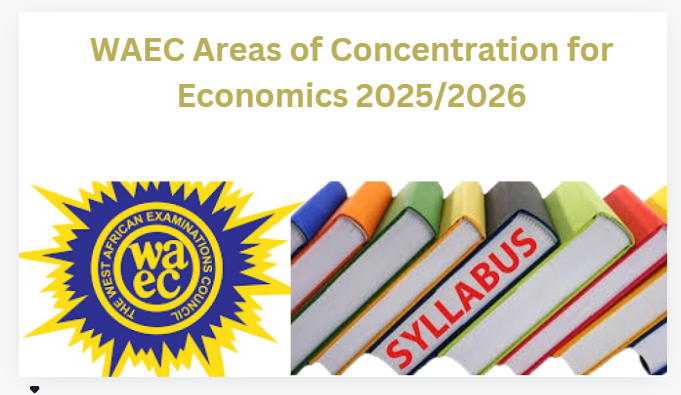The WAEC Syllabus for Computer Science 2025/2026 PDF Download is based on the National Curriculum for Senior Secondary School Computer Studies, covering key areas like computer fundamentals, hardware, software, basic operations, applications, ICT, and ethics.
It aims to assess candidates’ understanding of computer concepts, problem-solving, software applications, device operation, and online skills. The syllabus includes three papers: Paper 1 (50 multiple-choice questions for 25 marks), Paper 2 (five essay questions, answer any three for 30 marks), and Paper 3 (practical skills test for 45 marks). All three papers must be taken.
READWAEC GCE Registration Form 2025/2026 Fee & Guideline
WAEC Syllabus For Computer Science 2025/2026 PDF Download
The WAEC syllabus for Computer Studies 2025/2026 is essential for guiding students on the topics and skills needed for the examination. It helps students understand the key areas, such as computer fundamentals, hardware, software, and ICT, ensuring they are well-prepared. The syllabus also provides a structured approach to studying, aligns with the curriculum, and aids in mastering problem-solving and practical computer skills, improving overall performance in the exam.
Detailed WAEC Syllabus For Computer Science 2025/2026
Aims and Objectives
- Basic concepts of computer and its operations
- Manipulative, computational and problem-solving skills
- Application of software packages
- Operation of computer-related simple devices
- Online skills and their applications
- Safe attitudes and good practices on effective use of computers
- Potential for higher studies in computer-related areas
Scheme of Examination
There will be three papers, Papers 1, 2 and 3, all of which must be taken. Papers 1 and 2 shall be composite paper to be taken in one sitting.
Paper 3 will test the actual practical skills of school candidates and knowledge of practical work for private candidates. It will consist of three questions to be answered in 2 hours for 45 marks.
Paper 1 will consist of 50 multiple-choice objective questions, all of which are to be answered in 1 hour for 25 marks.
Paper 2 will consist of five essay questions. Candidates will be required to answer any three in 1 hour for 30 marks.
The syllabus for Computer Studies covers a wide range of topics, from early computing devices to modern computer systems, their components, software, and applications. It explores the evolution of computing devices such as the abacus, Charles Babbage’s analytical engine, and modern machines like ENIAC and personal computers. Key concepts include the fundamentals of computing, differences between hardware and software, logic circuits, and computer ethics, such as security breaches, viruses, and privacy concerns.
Students learn about input and output devices, CPU components, memory types, and the functions of various software, including operating systems and applications like word processors, spreadsheets, and databases. It also covers ICT, networking, web development, and problem-solving skills using programming languages like BASIC.
The syllabus emphasizes practical applications, such as file management, computer operations, and troubleshooting, alongside theoretical concepts.
COMPUTER EVOLUTION
- Computing Devices I (Pre-computing age – 19th century)
- Abacus
- Slide Rule
- Napier’s Bone
- Pascal’s Calculator
- Leibnitz Multiplier
- Jacquard Loom
- Charles Babbage’s Analytical Engine
- Hollerith Census Machine
- Burrough’s Machine
- Contribution of each founder to modern computers
- Development trends from one device to another
- Computing Devices II (20th century to date)
- ENIAC
- EDVAC
- UNIVAC 1
- Desktop Personal Computers
- Laptop and Notebook Computers
- Palmtop
FUNDAMENTALS OF COMPUTING
- Overview of Computing Systems
- Definition of a Computer
- Two main constituents: Hardware and Software
- Classification and examples of hardware and software
- Functional parts of a computer
- Characteristics of Computers: Electronic nature, Accuracy, Speed, Interactivity
- Differences between hardware and software
- Data and Information: Definitions and examples
COMPUTER ETHICS AND HUMAN ISSUES
- Computer Ethics and Security
- Sources of security breaches: Viruses, Worms, Trojan Horses, Poor network implementation, Hackers, etc.
- Preventive measures: Antivirus software, firewalls, encryption, network policies, etc.
- Legal Issues: Copyright, Ownership rights (text, images, audio, video), Privacy, Cybercrimes
COMPUTER HARDWARE
- Input Devices
- Definition and examples: Keyboard, Mouse, Scanner, Joystick, Light Pen
- Types of keys: Function, Numeric, Alphabetic, Cursor keys
- Functionality of each device
- Output Devices
- Definition and examples: Monitor, Printer, Speaker, Plotter
- Differences between input and output devices
- Types of printers: Inkjet, Laser, Line printers
- Central Processing Unit (CPU)
- Components: Arithmetic Logic Unit (ALU), Control Unit
- Memory Unit: Primary (ROM, RAM), Secondary memory (Floppy disks, Hard disks, CD, DVD, Flash disks)
- Units of storage: Bits, Nibble, Bytes, Kilobytes, Megabytes, etc.
- Logic Circuits: AND, OR, NOT gates, Truth tables, XOR, NAND, NOR gates
COMPUTER SOFTWARE
- System Software
- Operating System (MS Windows, Linux, UNIX)
- Translators: Compiler, Assembler, Interpreter
- Utility Programs: Anti-virus, Editor, etc.
- Application Software
- Word Processing (MS Word, WordPerfect)
- Spreadsheet (MS Excel, VisiCALC)
- Database (MS Access, Oracle)
- Graphics (CorelDraw, Photoshop)
- Presentation Software (MS PowerPoint)
COMPUTER APPLICATION
- Word Processing
- Definition, examples (MS Word, WordStar)
- Features and operations: Create, Edit, Save, Print, etc.
- Spreadsheet
- Definition, examples (MS Excel, VisiCALC)
- Basic operations: Data entry, Arithmetic calculations, Formatting, Charts
- Database
- Definition, examples (DBase IV, Foxbase, MS Access, Oracle)
- Database structure: File, Record, Field, Key, Types of organization: Hierarchical, Network, Relational
- Graphics
- Definition, examples (CorelDraw, Photoshop)
- Design applications: Business card, logo, certificate
- Presentation Software
- Examples: MS PowerPoint
- Operations: Create, Insert content, Run slide show
MANAGING COMPUTER FILES
- File Handling
- Types of files: Master file, Transaction file, Reference file
- File access methods: Serial, Sequential, Random
- File operations: File creation, retrieval, modification, deletion
- File Security
- Data loss causes: Overwriting, Deletion
- Security methods: Backup, Antivirus, Passwords
BASIC COMPUTER OPERATIONS
- Booting and Shutdown
- Cold and Warm booting processes
- Booting steps
- Identification of registers (MDR, CIR, SCR)
- Data Processing
- Input-Process-Output model
- Factors affecting data transfer speed
INFORMATION AND COMMUNICATION TECHNOLOGY (ICT)
- Types of ICT
- Broadcasting: Radio, Television
- Telecommunication: PSTN, Mobile Phones, Satellite
- Data Networks: PAN, LAN, MAN, WAN, Internet
- Information Systems: GPS, Data Processing Systems
- Internet and Networking
- Internet: Definition, Browsers, Protocols (HTTP, HTML)
- Types of Networks: PAN, LAN, WAN, MAN
- Network Devices: Hub, Modems, Switches, Routers
DEVELOPING PROBLEM-SOLVING SKILLS
- Programming Languages
- Levels: Machine Language, Assembly, High-Level Languages (BASIC, C, Python, Java)
- Algorithm and Flowchart development
- BASIC Programming
- Definitions, Data types, Statements (INPUT, PRINT, LET, END)
- Arithmetic operators, Built-in functions (SQR, INT, ABS, COS, etc.)
- Simple and advanced BASIC programs
- System Development Cycle
- Stages: Preliminary study, Feasibility, Analysis, Design, Implementation, Maintenance
- Program Development Cycle
- Stages: Problem definition, Flowcharting, Coding, Testing, Debugging
LIST OF FACILITIES AND MAJOR EQUIPMENT/MATERIALS REQUIRED
- Equipment/Materials Required
- Computer sets, Laptops, Scanners, Printers
- Memory chips, Hard disks, Flash drives
- Internet connectivity, DVDs, Compact disks
- Cables (Power, Data), Word Processing Packages, Database Packages, BASIC Programs, CorelDraw





